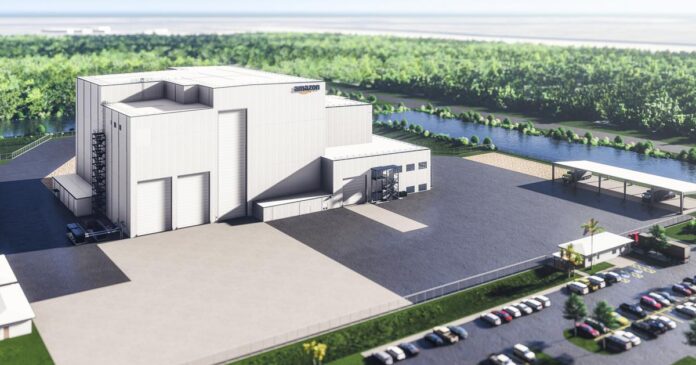
Amazon builds new Florida satellite facility for its Starlink rival
In the race to bridge the digital divide and bring high-speed internet to remote and underserved areas, Amazon’s Project Kuiper is a promising contender.
With plans to launch a constellation of 3,236 satellites, Project Kuiper aims to revolutionize satellite broadband connectivity, providing fast and affordable internet access to millions of users worldwide.
This article delves into the details of Project Kuiper, its goals, satellite-processing facility, job creation prospects, and the future of affordable internet.
1. The Vision of Project Kuiper
Project Kuiper, an Amazon initiative, envisions bringing high-speed internet to regions with limited or no access to traditional internet and communication services.
Inspired by the success of Elon Musk’s Starlink, Amazon aims to create a global network of satellites that can offer seamless broadband coverage to rural and remote areas, connecting communities that have long been left behind.
2. Satellite Constellation Plan
To achieve its ambitious goal, Project Kuiper plans to deploy a constellation of 3,236 satellites into space. These satellites will work in harmony to deliver a strong and reliable internet signal to users on the ground.
By leveraging advanced satellite technology, Project Kuiper aims to provide a robust and low-latency internet experience, rivaling traditional wired connections.
3. The Satellite-Processing Facility
In a significant step forward, Amazon is investing $120 million in a state-of-the-art satellite-processing facility at the Kennedy Space Center in Florida.
This facility will serve as the hub for assembling and preparing Kuiper’s satellites before they are launched into orbit. The construction of this facility marks a crucial milestone, bringing Project Kuiper closer to liftoff.
4. Satellite Assembly and Deployment
Kuiper’s satellites will be assembled at a cutting-edge manufacturing facility in Kirkland, Washington. By the end of 2023, this facility will be fully operational and ready to cater to the satellite assembly needs.
Once assembled, the satellites will be transported to the Kennedy Space Center in Florida, where they will undergo final preparations before being deployed commercially.
5. Partnerships and Launches
Project Kuiper has already secured launch partnerships with esteemed spaceflight companies like Blue Origin, Arianespace, and United Launch Alliance (ULA).
The majority of the satellite launches will occur from Florida’s Cape Canaveral Space Force Station, situated near the satellite-processing facility. This strategic partnership ensures that Project Kuiper’s satellite deployment is carried out efficiently and effectively.
6. Job Creation and Economic Impact
Amazon’s Project Kuiper is not just about expanding internet access; it is also set to create a significant economic impact. With over 1,400 people already working on the initiative, Project Kuiper is expected to generate thousands of jobs, particularly in Alabama, Florida, and Colorado.
The initiative will also support numerous suppliers, fostering highly skilled jobs and boosting local economies.
7. Affordability: A Key Principle
Amazon understands the importance of affordability in its quest to connect the underserved. While the company has not yet announced specific consumer pricing details, it has emphasized that affordability is a fundamental principle driving Project Kuiper.
With a focus on budget-friendly plans, Amazon aims to make satellite broadband accessible to a wide range of users, transcending geographical and economic barriers.
Conclusion
Amazon’s Project Kuiper is on track to redefine satellite broadband connectivity. With a robust constellation of satellites, cutting-edge facilities, and strategic partnerships, it aims to connect millions of people in remote and underserved areas, empowering them with fast and affordable internet access. By bridging the digital divide, Project Kuiper takes humanity one step closer to a more inclusive and connected world.
FAQs
- What is Project Kuiper’s main objective? Project Kuiper aims to provide fast and affordable satellite broadband to areas “unserved or underserved by traditional internet and communications options.”
- How many satellites will Project Kuiper deploy? Project Kuiper plans to deploy a constellation of 3,236 satellites to ensure seamless broadband coverage for rural users.
- Where will Project Kuiper’s satellites be assembled? Kuiper’s satellites will be assembled at a state-of-the-art manufacturing facility in Kirkland, Washington.
- Which spaceflight companies are partnering with Project Kuiper? Project Kuiper has secured launches from Blue Origin, Arianespace, and United Launch Alliance (ULA).
- How will Project Kuiper impact job creation? Project Kuiper is expected to create thousands of jobs, especially in states like Alabama, Florida, and Colorado, and support numerous suppliers and highly skilled positions.

























